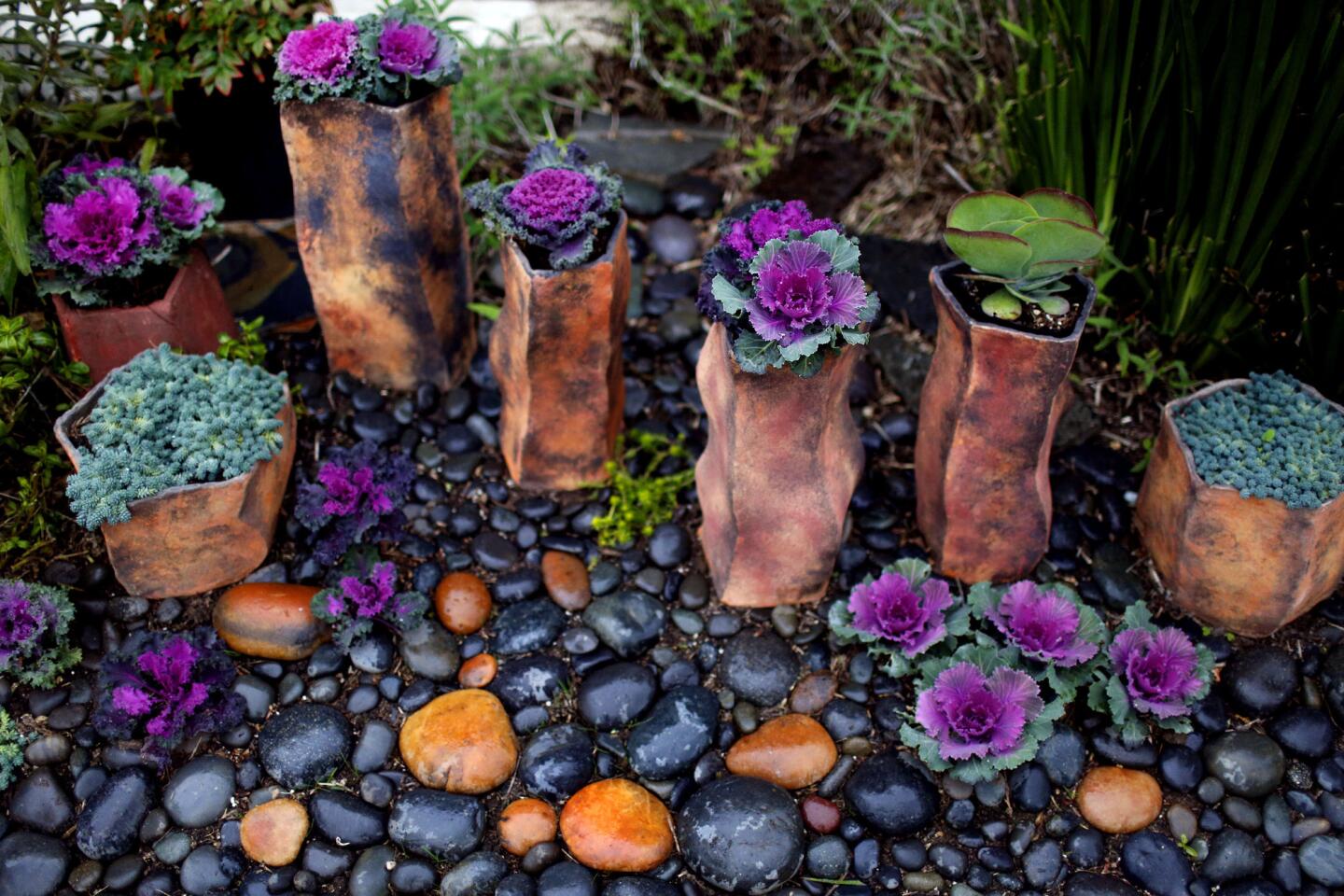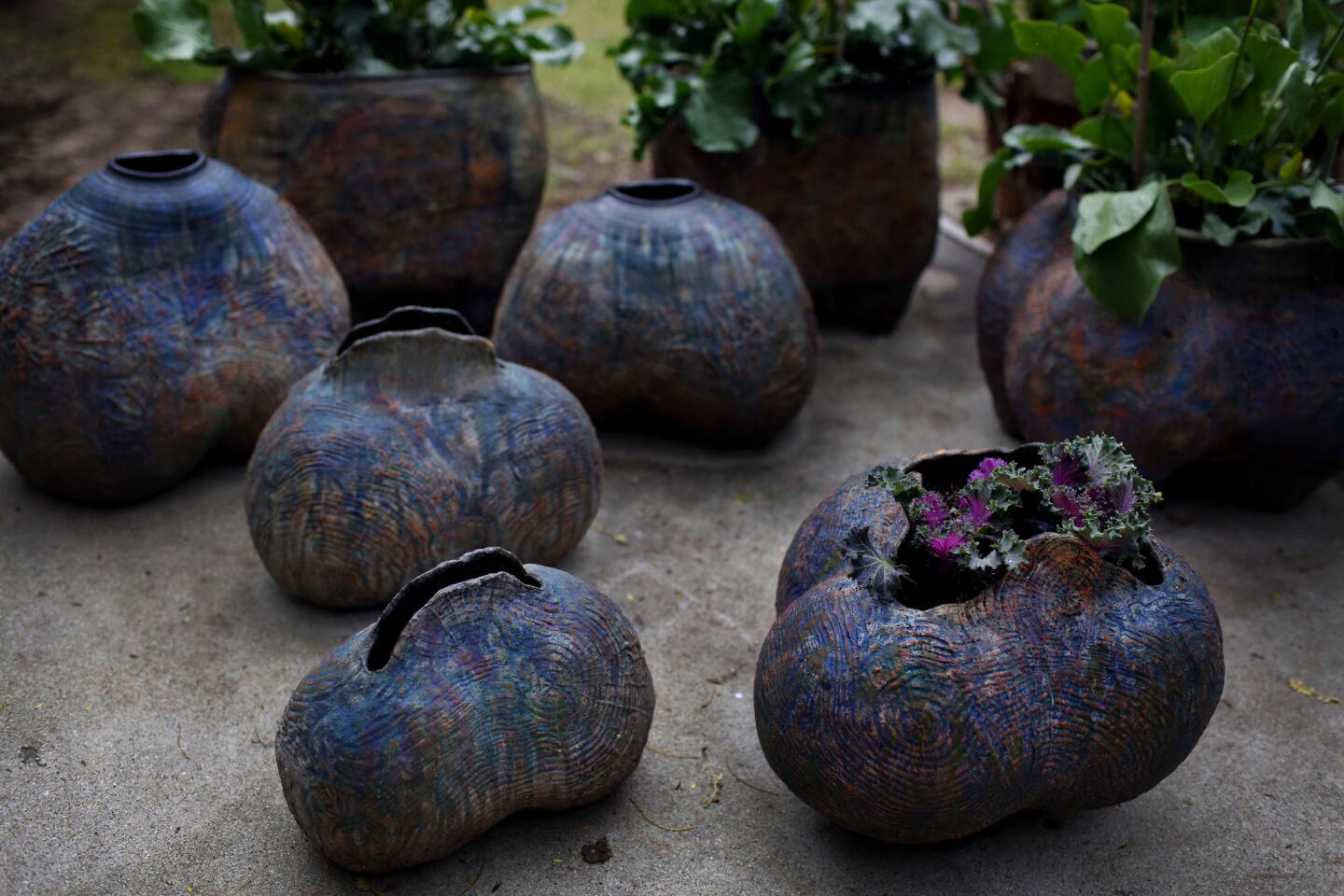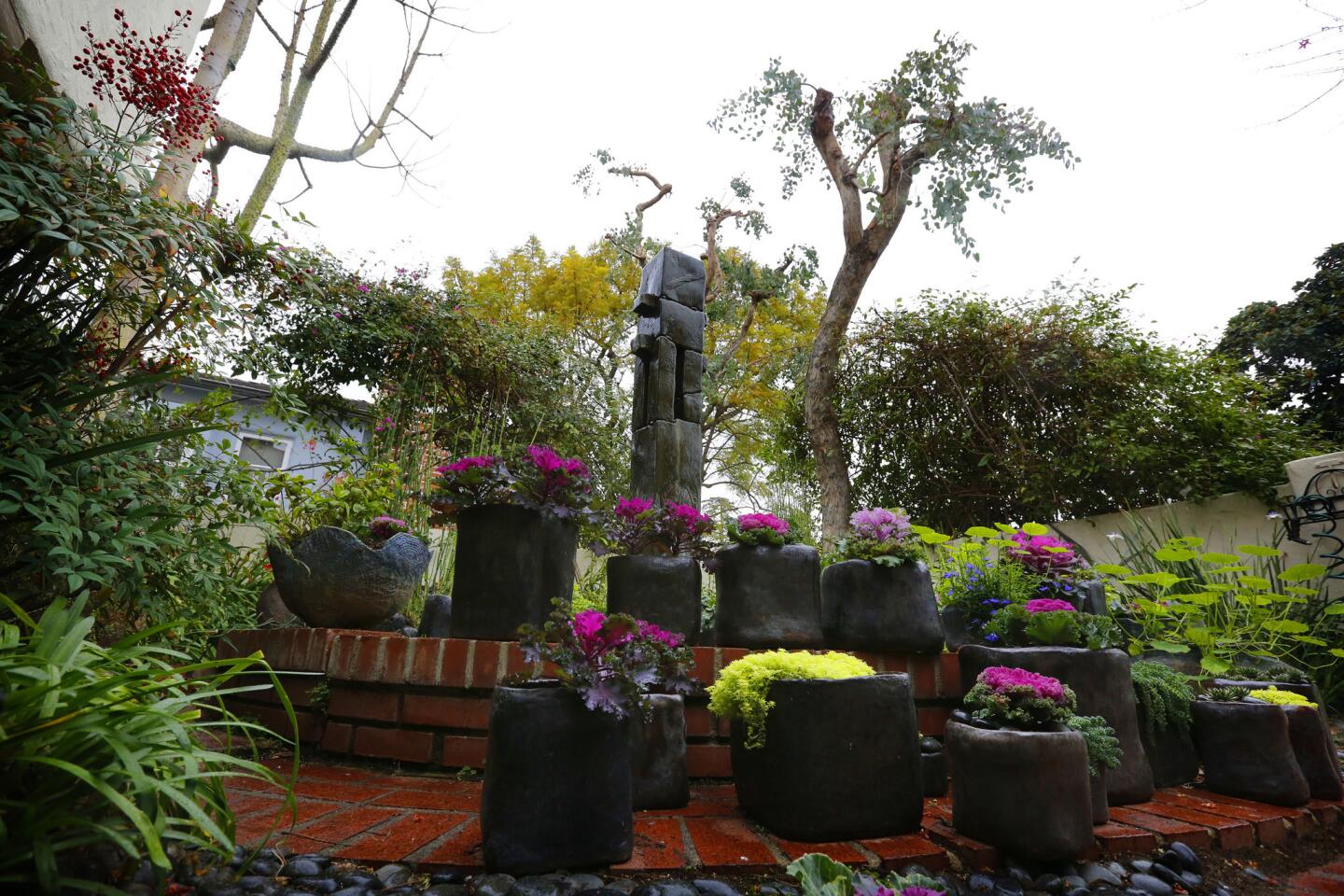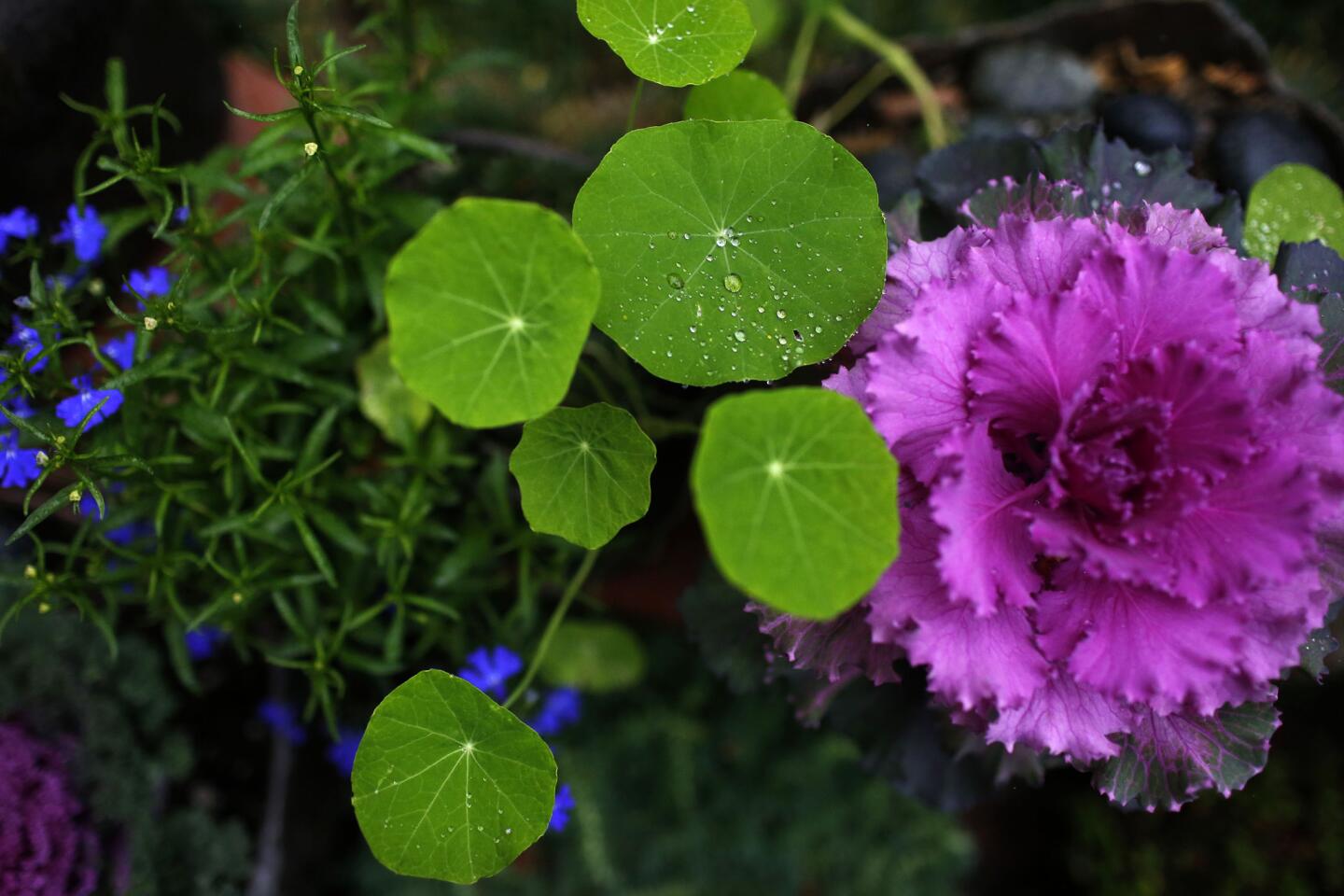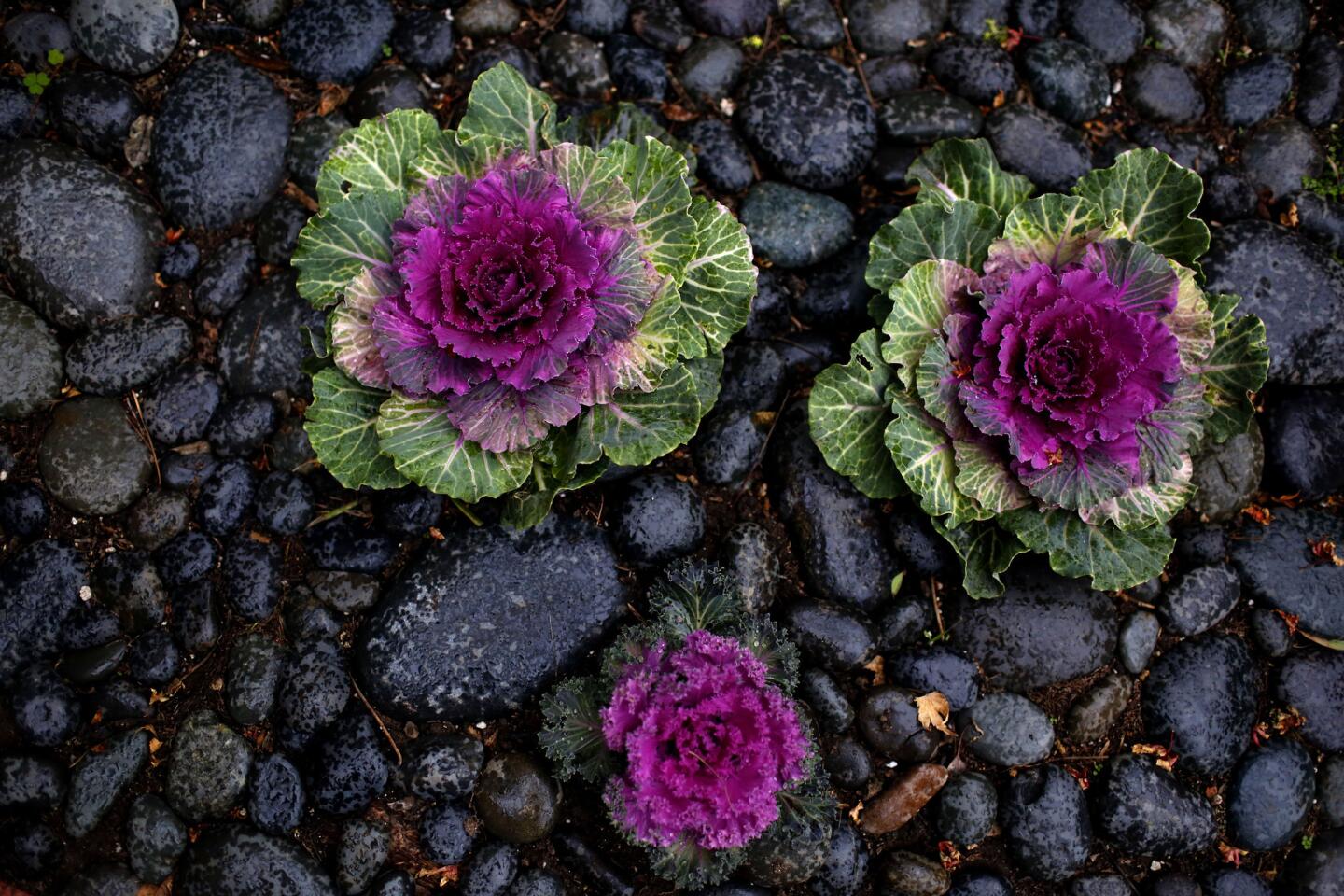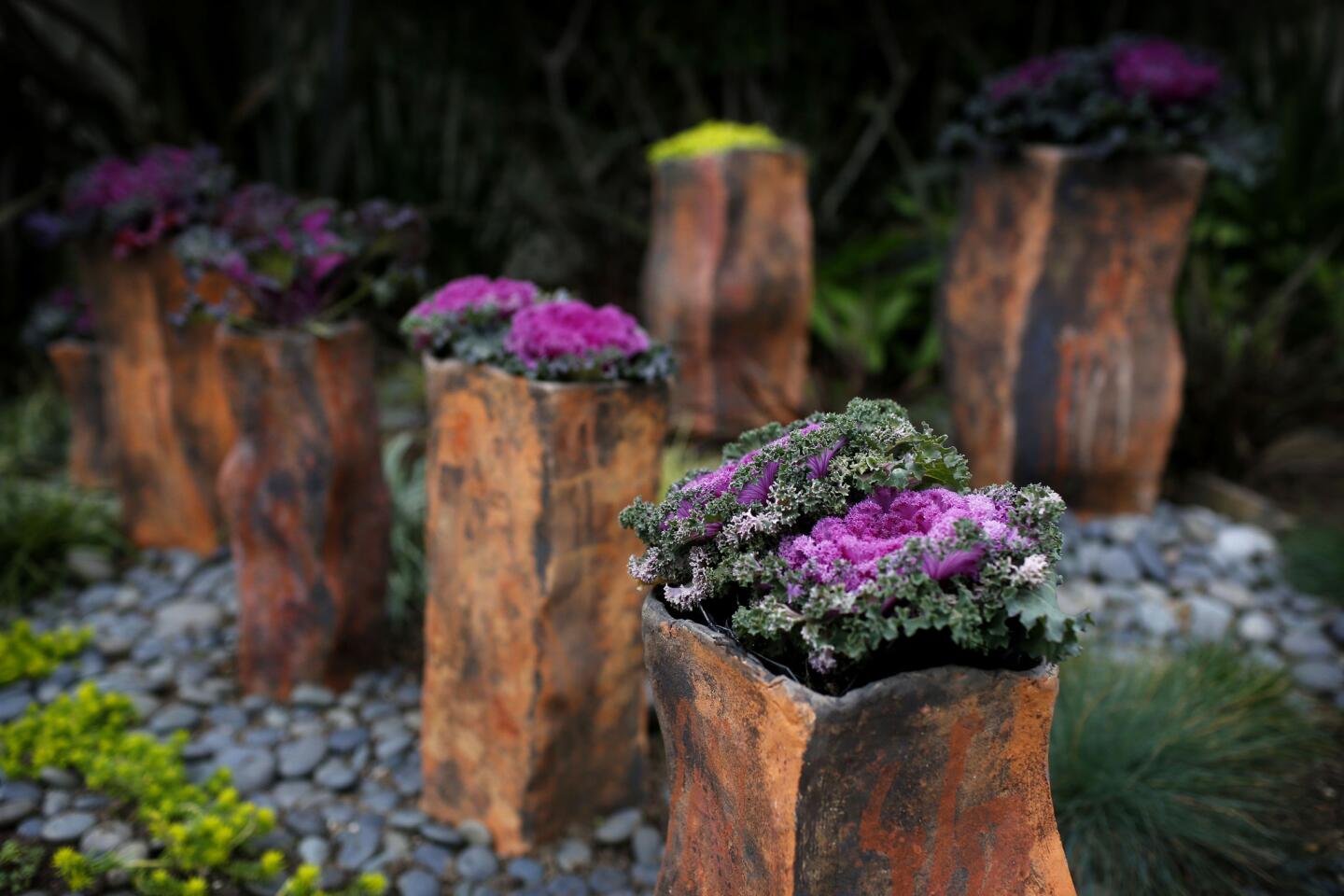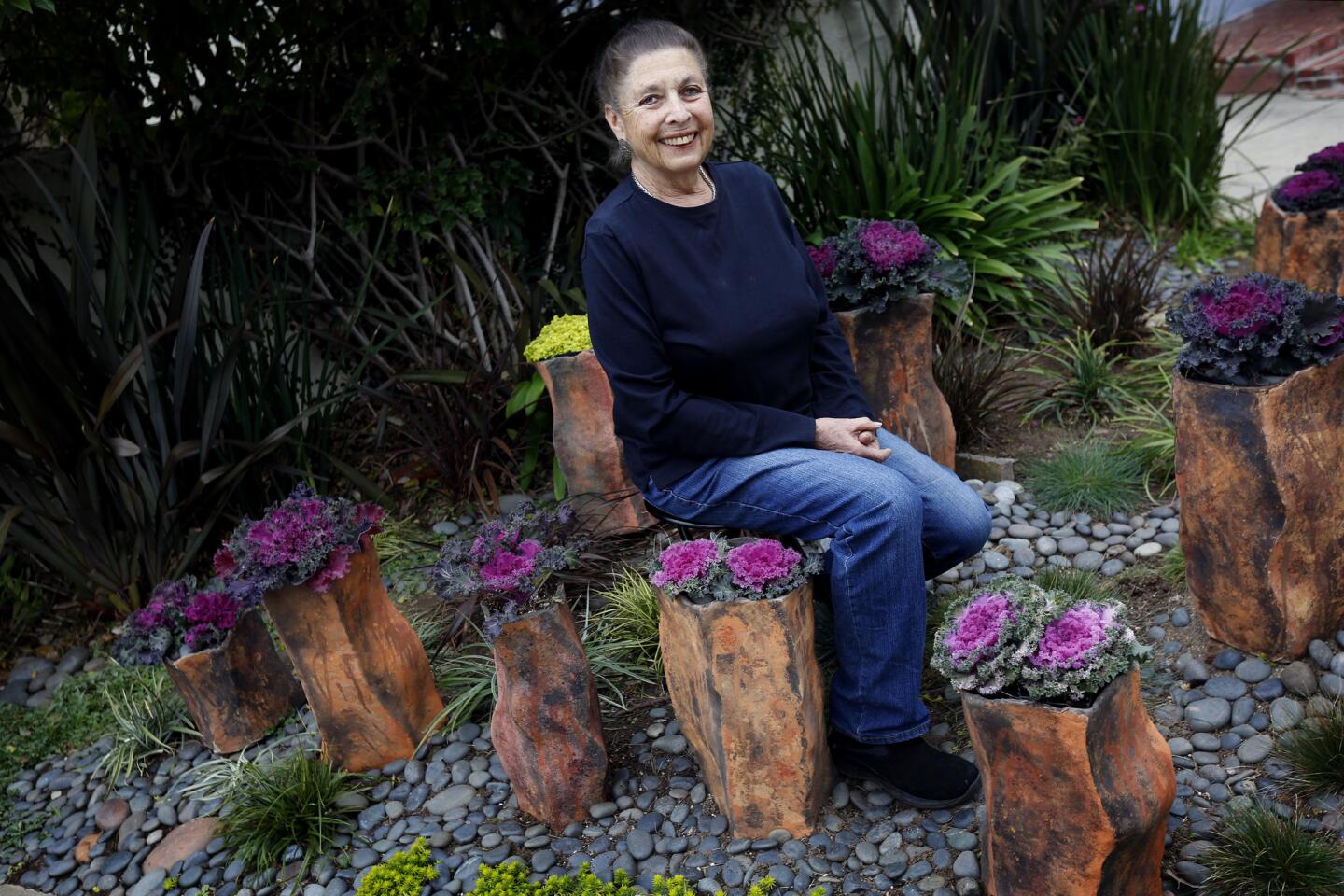How the drought led an L.A. artist to create this stunning container garden
Ceramic artist Stefani Gruenberg had more than saving water in mind when she and husband Peter removed their large sloping lawn in Westwood.
“I was obsessed with conserving water,” she says. “So I decided to turn the drought into an opportunity to make art.”
The couple began by tearing out the parking strip in front of their home and replacing it with the drought tolerant ground cover Dymondia margaretae.
Then, last September, they removed their front lawn and installed flagstone walkways, more dymondia, an assortment of rocks and pebbles and a hardy mix of plants including succulents, flax, statice and kangaroo paw.
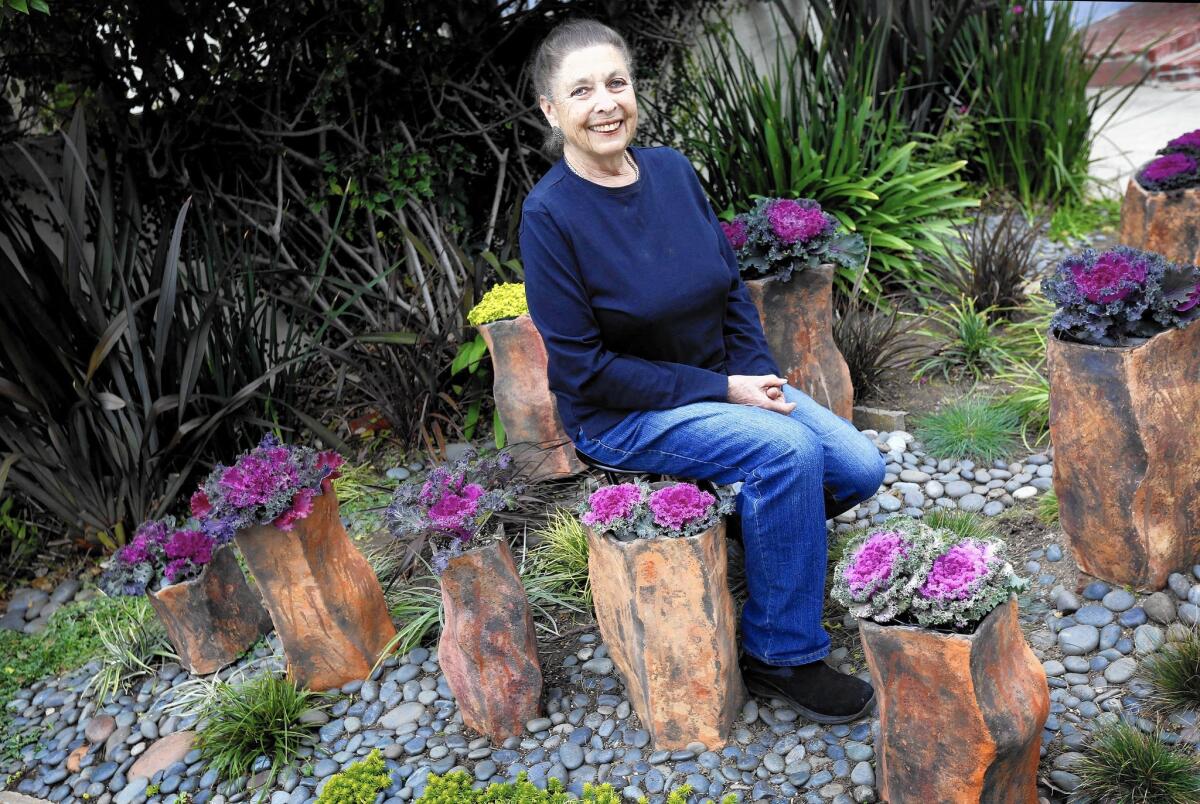
Doing so allowed Gruenberg to combine her two loves — gardening and ceramics — to transform the manicured lawn into something special.
For more than the yard’s crawling ground cover (stonecrop sedums) and tufts of fescue grass, the garden is turning heads thanks to the hand-sculpted clay planters Gruenberg created in her home studio and installed out front.
The landscape, she says, is the ultimate art project.
Emerging from the ground, a few feet above the low-lying plants, the dramatic free-standing pots mirror the colors, patterns and textures of the flagstone steps.
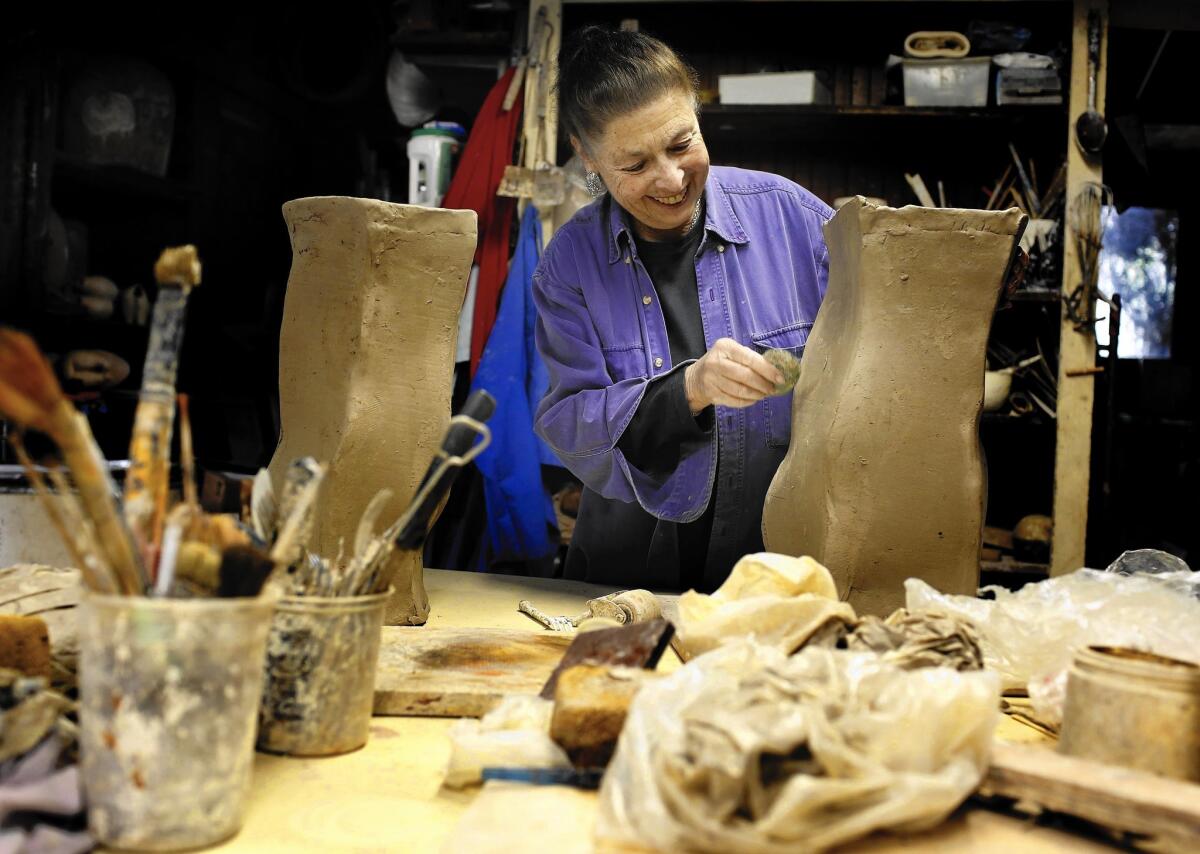
That was the artist’s intent. “I wanted them to look like they came out of the same volcano,” she explains.
Working in a studio behind her 1929 Spanish home, Gruenberg composes the earthy planters using templates, and then fires them in the outdoor kiln her husband helped her install decades ago. She then adds low-fired glazes. Some are even decorated with drips her granddaughter applied with an eye dropper. “I told her that her drips would be there when they dig up our civilization in 10,000 years,” she says.
For a bit of street side glamour, Gruenberg garnished the planters with mounds of ornamental kale that are highlighted by vibrant purple rosettes.
Though she has lived in the neighborhood since 1969, the engaging habitat has attracted neighbors and created a new community of garden-lovers.
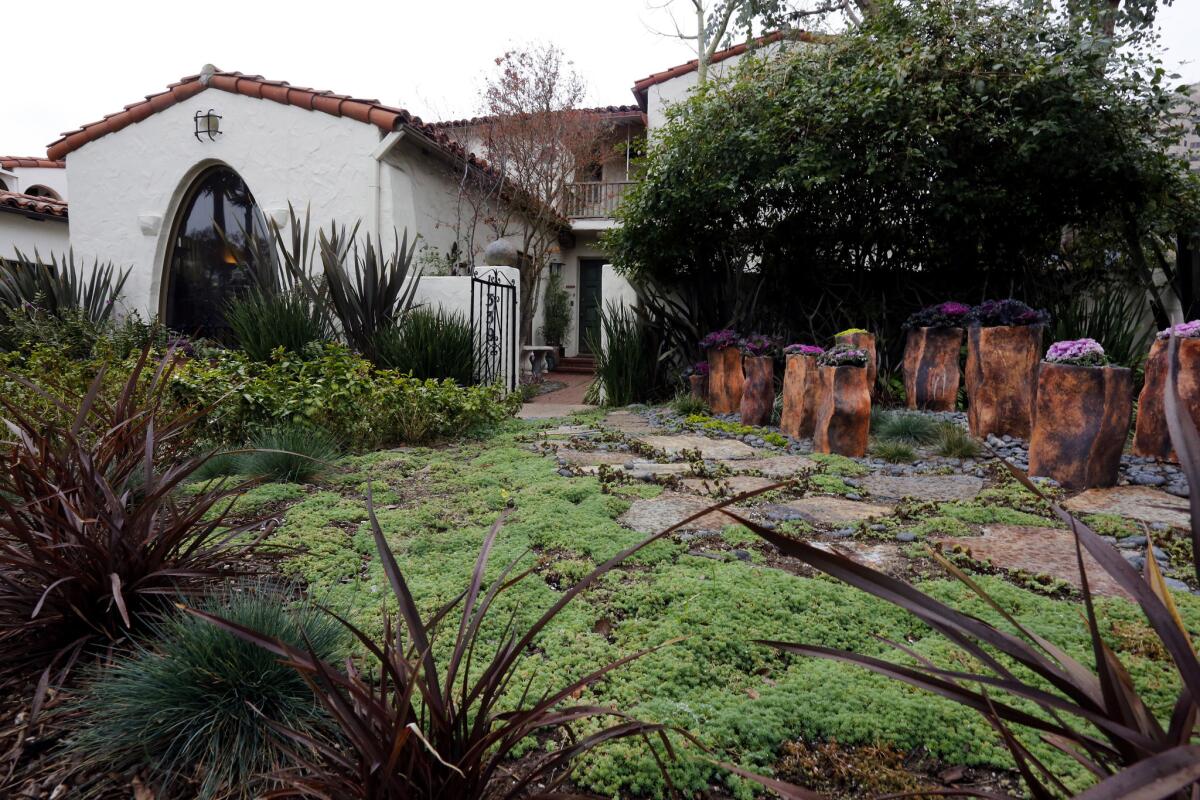
Last September, Stefani and Peter Gruenberg removed their front lawn and installed flagstone walkways, drought-tolerant groundcover dymondia margaretae and an assortment of rocks and pebbles and low-water plants. The landscape is decorated with her homemade planters.
“I’m out here all the time,” says Gruenberg. “I have a whole new group of friends who I have met because I am outside in my garden.”
For Gruenberg, who is 79, the process of gardening and working with clay has a therapeutic quality. “I feel these activities must release endorphins in my brain and make me happy,” says the artist. “It has made for a happy life.”
::
How to keep your container plants happy
No plant is truly drought tolerant in a container — with the exception of succulents. If you want to plant something other than cacti, here are a few ways to keep container plants happy:
The pot: Glazed ceramic, metal, thick clay and plastic pots retain much more water than traditional terra cotta and require less water. Terra cotta pots are excellent because they allow plants to “breathe” and because they help prevent overwatering. Avoid dark-colored or metal pots that can heat up and damage roots.
Soil: Choose a potting mix that is friable and drains quickly, such as a “cactus mix.” Avoid using your own garden soil, except in small quantities added to packaged soil mix. Make sure that your mix has at least 25 to 30% by volume of perlite, a light mineral that aids drainage.
Water: Container plants grow best when they are watered regularly. Aim to keep the soil barely to slightly moist at all times, allowing the top inch or two of soil to dry out between waterings. Never allow the soil to entirely dry out, even on plants that need no summer water in the wild. If soil becomes desiccated and compacted, break up the surface with a fork or cultivator, then soak the plant in a bucket of water until the soil is thoroughly moistened.
Pruning: The best time to root-prune is before active growth resumes, generally in the fall. If you want to keep plants in the same container, you will need to prune the plants’ roots. When root-pruning an evergreen, make sure to prune stems and leaves as well to compensate for water loss.
Fertilizing: Many potting soils have almost no nutrients and must be supplemented. Fertilize sparingly as growth begins in spring. Do not fertilize during dormancy or immediately after transplanting. Make sure the fertilizer is complete and has chelated iron.
Source: Theodore Payne Foundation for Wildflowers and Native Plants, theodorepayne.org/
Twitter: @lisaboone19
ALSO:
How to landscape with pavers that are low on water, high on appeal
It’s Dry Out There: 11 Inspiring water-wise landscapes
Will L.A. become the land of front-yard veggie gardens? This couple is leading the way
How one L.A. couple ripped out the grass -- and created a drought-tolerant dreamscape
Drought-tolerant plants that will look great in your garden!
